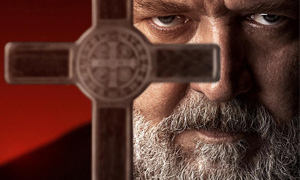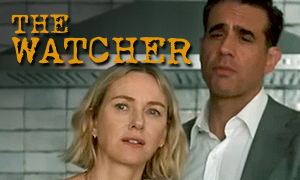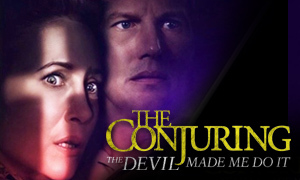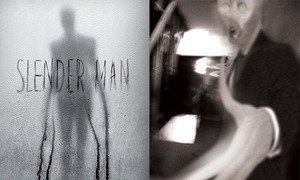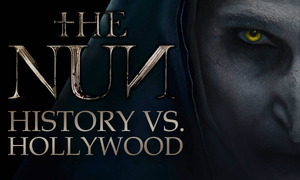The Quiet Ones: History vs. Hollywood
based on The Philip Experiment conducted in 1972 under the advisement of Dr. A.R.G. Owen
| REEL FACE: | REAL FACE: |
Jared Harris
Born: August 24, 1961 Birthplace: London, England, UK | Dr. Alan Robert George Owen
Born: July 4, 1919 Birthplace: Bristol, England, UK Death: January 18, 2003, Calgary, Alberta, Canada |
Is the girl in the movie, Jane Harper, based on a real person?

Jane Harper (Olivia Cooke) is an entirely fictional character.
Did the real experiments take place at Oxford University?
No. The Quiet Ones true story reveals that the real experiments were conducted in Toronto, Canada under the patronage of the Toronto Society for Psychical Research (TSPR), founded in 1970 and not affiliated with a university. The group was led by participant Iris May Owen and was operated under the scientific advisement of her husband, Dr. Alan Robert George Owen (Dr. A.R.G. Owen), a former fellow at Trinity College, Cambridge where he was a professor of mathematics. He had also worked as a lecturer in genetics at Cambridge until 1970, the year he acted on an invitation for his family to immigrate to Canada, where he was to direct the parapsychology research of the Toronto-based New Horizons Research Foundation. Together with his wife Iris Owen, they agreed to conduct full-time research for the foundation for a period of five years. Dr. Owen specialized in psychic research with an emphasis on poltergeists.
What year did the real experiment (the Philip Experiment) take place?
Dr. A.R.G. Owen and the eight participants of the research group began conducting the Philip Experiment in 1972. In the movie, Professor Joseph Coupland (Jared Harris) conducts his experiments in 1974. George Owen's wife, Iris, who was the leader of the group involved in the Philip Experiment, wrote the 1976 book Conjuring Up Philip: An Adventure in Psychokinesis, which chronicled the experiment and its findings in detail. Fellow participant Sue Sparrow was her coauthor.
Who were the members of the real research group?
The real group operated under the auspices of the Toronto Society for Psychical Research and was made up of eight people, three men and five women. The group's members did not inspire any of the movie's characters and only one was a student. None of the members were trained mediums. The group included the lead participant, Iris Owen (a former nurse and A.R.G. Owen's wife), Margaret Sparrow (the former chairman of MENSA in Canada, the organization for individuals with high IQs), Andy H. (housewife), Lorne H. (industrial designer, husband of Andy H.), Al P. (heating engineer), Dorothy O'D. (housewife and bookkeeper), Bernice M. (accountant), and Sidney K. (sociology student). Dr. A.R.G. Owen and Joel Whitton (a psychologist) came to meetings as observers. -Conjuring Up Philip
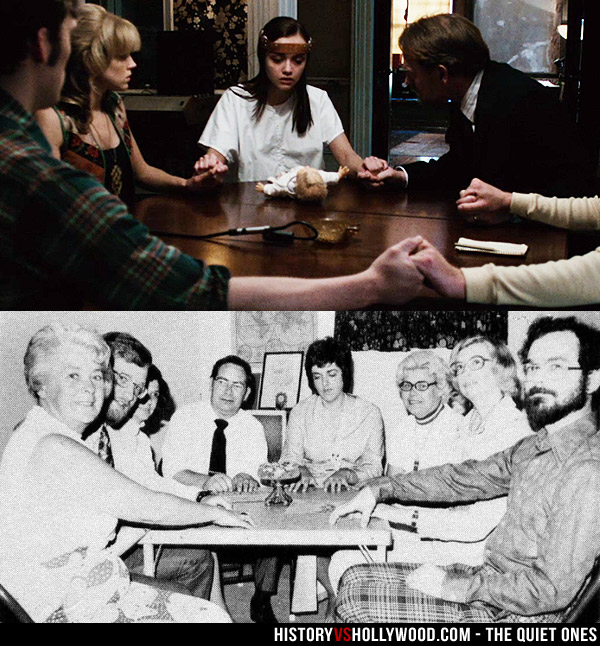
Top: The five-person group in The Quiet Ones movie attempts to contact the poltergeist Evey. Bottom: Iris Owen (left) was the lead member of the real group, which consisted of eight people and is pictured here during one of their séances in the early 1970s. Iris's husband, Dr. A.R.G. Owen, was the group's adviser.
What was the purpose of the Philip Experiment?
In researching The Quiet Ones true story, we discovered that the purpose of the real experiment was to prove that the supernatural is a manifestation of what already exists in the mind. Proving such a hypothesis true doesn't necessarily mean that ghosts aren't real. It just means that they are created by us, instead of coming from somewhere else. For example, if you grew up fearing that an evil old woman lurks under your bed and will grab your ankles when you step onto the floor, you imagining the woman in detail could be enough to manifest her into an actual demonic spirit. Basically, thinking of a ghost and providing it an identity might be enough to conjure it into existence.
Taking that theory even further, the researchers behind the Philip Experiment gave the character they were imagining a full life, including a name, a nationality, a past and a personality. During their séances, they tried to converse with Philip, their once fictional character. They believed that giving Philip such realistic traits and attempting to communicate with him would help to conjure up an actual ghost.
Is Philip, the entity from the real experiment, anything like Evey, the entity in the movie?
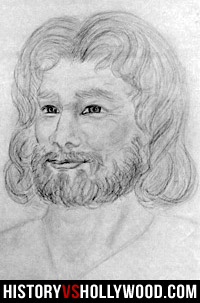
The fictional Philip Aylesford, drawn by one of the séance participants.
This fabricated tale contains many elements that have historically been associated with reports of ghosts: a secret love affair, a heartbroken and vengeful wife, a burning at the stake, and a tragic death by suicide.
Did the professor's son really die in an asylum?
No. Dr. A.R.G. Owen, a former professor of genetics at Cambridge, never had a son who died in an asylum from self-inflicted wounds. Dr. Owen did have a son, Robin E. Owen (born May 21, 1955), who observed and assisted the Philip Experiment as the recorder and photographer.
Unlike the professor in the movie, Dr. Owen was trying to help the researchers prove that it's possible for a group of focused participants to create an apparition. In the movie, Professor Joseph Coupland (Jared Harris) plays a more central role and is trying to prove that poltergeists aren't real. He believes they exist solely in the mind of a seemingly possessed subject and are expressed through the negative telekinetic energy projected by the subject. Of course, Coupland eventually discovers he's wrong.
Did they really hold séances to communicate with the entity?
Yes. However, the real séances were much tamer. The eight-person group met once a week. Unlike The Quiet Ones movie, there were no smoking dolls and demonic symbols (or sigils) were not branded into the skin of the participants. In order to communicate with Philip, the group would ask him a question and he would rap on the underside of the card table, one rap for "yes," two for "no." Professor Coupland uses this method to communicate with Evey in the movie. In real life, If someone in the group forgot and posed a question that required a more elaborate answer than yes or no, Philip would produce scratching noises. At his most violent, the table would supposedly move on its own, rotate on two or three legs, or turn on its side, yet the hands of the participants remained on the table when it happened. -Ghost Stories of Ontario
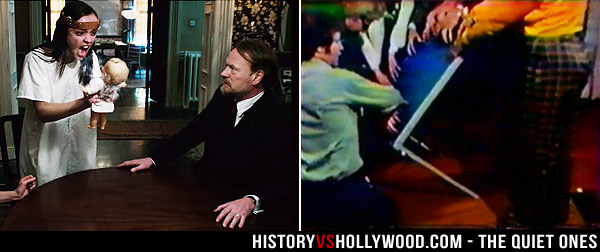
Jane's doll begins to burn during a séance in The Quiet Ones movie (left). Right: A card table turns onto its side in this image from one of the real-life séances that took place during the 1970s (see the video).
In addition to this, the participants claimed Philip could both dim and restore the room's lights at their request. They also described a fine mist that formed above the table on several occasions. They even said they could prompt Philip to make a cool breeze blow across the table. As for the card table itself, they said it often felt "alive" or electrified when Philip was present.
Did the true story involve a cult?
No. Not only didn't the true story behind The Quiet Ones movie involve a girl, it also never involved a devil-worshiping cult, which is part of the girl's past in the movie's story.
Did the real professor use unorthodox methods?
No. Dr. A.R.G. Owen did have the group hold séance-like meetings, but he did not engage in the more extreme experiments conducted on Jane Harper (Olivia Cooke) in The Quiet Ones movie. The only thing that could have been considered unorthodox at the time was the premise of the Philip Experiment itself; the idea that an apparition could be created from the minds of the séance participants.
"It was essential to their purpose that Philip be a totally fictitious character," says Dr. A.R.G. Owen. "Not merely a figment of the imagination but clearly and obviously so, with a biography full of historical errors." -Conjuring Up Philip
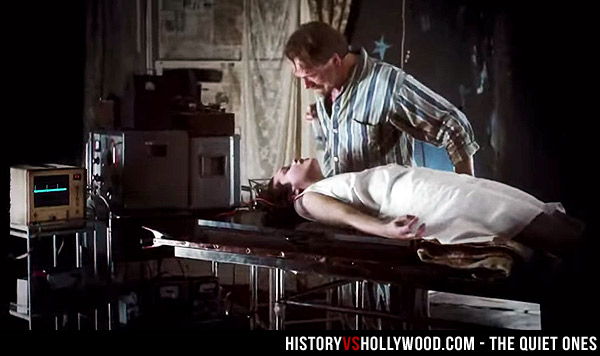
In the movie, Professor Joseph Coupland (Jared Harris) believes that killing Jane and reanimating her will free her of the poltergeist Evey. The scene is entirely fictional.
Did the spirit really become violent like in the movie?
No. The spirit of Philip, real or not, never branded members of the team with a demonic symbol, nor did he ever cause their bodies to levitate, slam into doors, etc. The apparition Philip also never caused bathwater to boil, a doll to start burning, a girl to catch on fire or a demonic spirit to spiral out of a possessed girl's mouth (the real Philip never possessed anyone). And as you probably guessed, the alleged ghost Philip never killed people.
Are photos of the real people shown during the movie's end credits?
No. The vintage looking photos shown during the end credits of The Quiet Ones movie are not the real people who inspired the movie's story. The photos, which are fake, are intended to represent real people, but they are actually just actors. As you've probably realized by now, the movie is almost entirely fiction.
Did they really videotape the experiments?
Yes, like in The Quiet Ones movie, the true story confirms that the séances were often filmed. Watch footage from several Philip Experiment séances. Dr. Owen's son, Robin E. Owen, often took the photos and did the filming.
Did the real Quiet Ones experiment work?
If by work, we mean, did the spirit of Philip ever actually materialize? Then, no, the Philip Experiment did not work. However, the Owen group believed that the experiment let them achieve far more than they'ed ever imagined possible.
Is it possible that the Philip Experiment was a hoax?
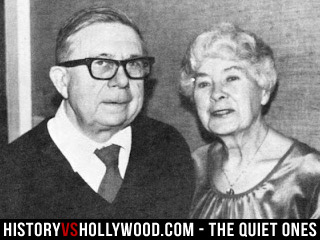
Husband and wife George and Iris Owen, pictured here in their later years, led the Philip Experiment.
Joel Whitton, an observer and psychiatrist, says that they went as far as to place paper doilies under the hands of the séance participants to ensure that no one was moving the table. He explained that if someone tried to move the table, the doilies would slide instead of the table and everyone would notice.
Although the group eventually believed that Philip could accurately answer questions, he was still a creation of their collective imagination, which was evident by his limitations. For example, he was able to answer yes or no to questions about his time period by responding with knocks, but both the questions and the answers were not information that the group was unaware of, at least not the whole group. Essentially, this means that Philip's responses were most likely coming from their own minds, either their subconscious or if it was indeed a hoax, their conscious minds.
Have any other experiments been done that were similar to the Philip Experiment?
Yes. The Philip Experiment has been replicated several times. The most notable of these efforts is the Skippy Experiment, sometimes called the "Sydney Experiment," conducted in Sydney, Australia in the 2000s. The researchers devised the story of a 14-year-old girl named Skippy Cartman. She was impregnated by her Catholic schoolteacher, who later murdered her so the church wouldn't find out. After the initial table used by the researchers didn't produce any results, they found success sitting around a light, three-legged card table. They reported similar knocking and scratching sounds heard during the Philip Experiment. They also said that the table moved and spun around on one leg. However, they never managed to capture any audio or visual evidence.
The Philip Experiment Footage & Related Quiet Ones Videos
Watch real Philip Experiment footage and witness the table-tilting phenomena for yourself. Is a spirit to blame or are the group's members perpetuating a hoax? Also view a dramatized documentary that chronicles the details and findings of the Philip Experiment.
WATCH The Philip Experiment FootageWatch actual footage of the Philip
Experiment conducted during the early
1970s. Hear the supposed raps coming from
the card table around which the
séances were held and watch it turn
on its side, albeit while the participants
hands are still on it. Iris Owen, Dr.
A.R.G. Owen's wife and a fellow
participant in the séances, is also
interviewed. |
WATCH The Philip Experiment DocumentaryWatch a relatively short Philip Experiment
documentary that chronicles the experiment
and discusses its premise. Former
participants and experts in the field are
interviewed. Most of the video features a
dramatized recreation of the experiment,
with little footage of the actual
participants, though we do get a brief
look at Dr. Alan Robert George Owen, the
group's scientific adviser. |
WATCH The Quiet Ones TrailerWatch The Quiet Ones movie
trailer for the 2014 horror film starring
Jared Harris (Lincoln), Sam
Claflin (The Hunger Games: Catching
Fire) and Olivia Cooke (Bates
Motel). The movie, which is based on
a real experiment conducted in Toronto in
the early 1970s, tells the story of a
professor (Jared Harris) and a group of
Oxford University students who attempt to
create a poltergeist by utilizing the
negative energy that surrounds a teenage
girl (Olivia Cooke). |
Link-to-Learn More:
- Biography of Paranormal Researcher Dr. A.R.G. Owen
- Welcome to the Experiment - An Interactive Quiet Ones Website that Sets Up the Movie
- The Quiet Ones Official Lionsgate Website


